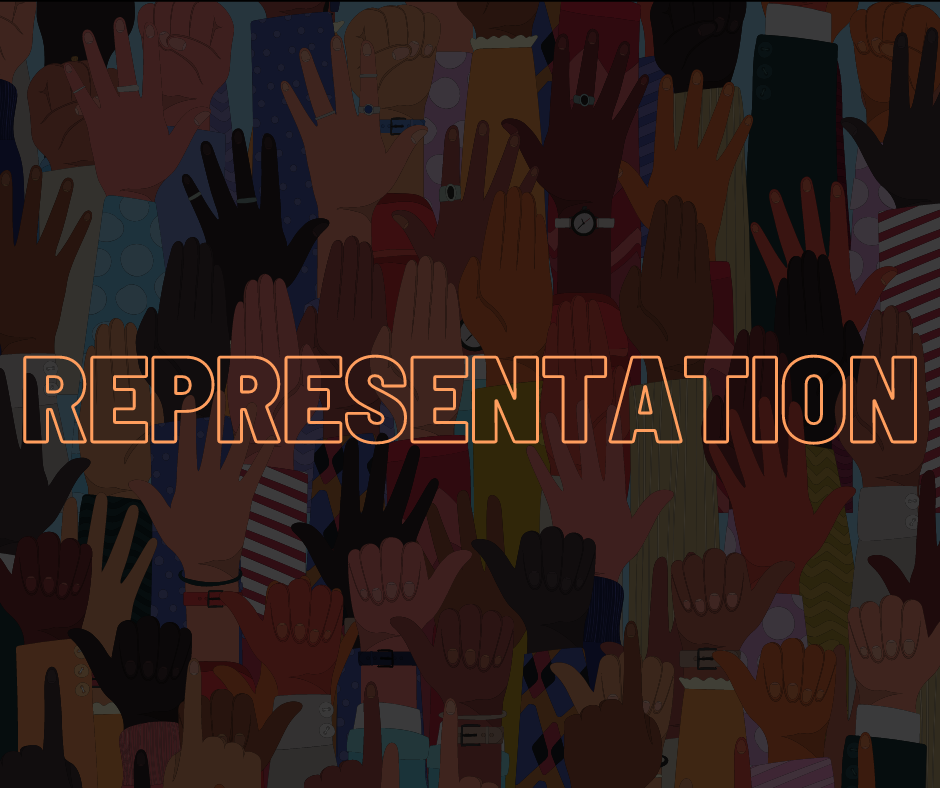If you’ve been following Slice of Culture for a bit, you’ve probably already gotten the sense that the word “representation” is something important to the site. Scrolling through the most recent articles, you might find a recipe from a community of color or a piece about the diversity in a new movie or television show.
After all, that’s what the site was made for. Two women of color co-founded Slice of Culture, and right on the site’s Meet the Team page you can see its creation happened because “there wasn’t enough coverage about their community and the diverse cultures within them.”
At a quarter of the way into the twenty-first century, you’ve probably heard about representation before. But between different needs for queer people and people of color and disabled people and every other marginalized group, it’s easy to let “representation” become just another buzzword.
So what is it, anyway? Why is it so important?
A quick search on Google will tell you representation is “the description or portrayal of someone or something in a particular way or as being of a certain nature.” In other words, it means how you show people or things.
The problem is, representation isn’t there for some groups. A study from the University of California Los Angeles found that despite making up about a quarter of the population, only nine percent of lead roles were given to disabled actors.
Of course, that’s for fictional media. But in some regards, representation in journalism is worse. The Wyoming Survey and Analysis Center found that while local and state media will cover about fifty percent of white homicide victims, they will only cover about eighteen percent of Indigenous homicide victims.
Back in New Jersey, newsrooms are attempting to solve lack of representation by hiring more diverse candidates. In August 2020, NorthJersey.com issued on their website a Diversity and Inclusion Pledge for its newsroom, or DEI Pledge for short. Other newsrooms did the same, with NJ.com announcing their creation of a position focusing on diverse communities the same month.
Slice of Culture contributor Joseph Caruso, who recently co-wrote an article about how recent film Elemental made him and his partner’s relationship feel seen, said representation is about “showing that the experiences that I or anyone else have are legitimate, whether it be about where I’m from, my ethnic background, or even my day-to-day life. Sometimes seeing a character act like me, handle a situation like I would, or even look like me, can mean the world to me.”
Caruso recounted how when he was younger, he was unhappy with his body type and how it was ridiculed in real life and in fiction. Then, he watched Avengers: Endgame.
“I remember seeing an overweight Thor, and seeing him used as both the comic relief and a punchline for numerous fat jokes,” he said. “When I saw that he was still able to wield his hammer, meaning that he was still worthy, and seeing him go into battle and fight furiously against Thanos and his army, I felt seen.”
Good representation has the power to make anyone feel seen, regardless of who they are. But good representation is more than just showing diversity, it’s about having diverse people creating things.
And yes, there is bad representation. Think blackface and the gangster Latino stereotype and Mickey Rooney’s portrayal of a Japanese man in Breakfast at Tiffany’s.
Representation has come far since Breakfast at Tiffany’s, but it can still get better. According to UCLA, female representation has become proportionate to the amount of women there are— but that’s only in front of the camera. But according to the same study, there aren’t enough of them in the writer’s room.
And just because a media company hires people of color, doesn’t mean they are retaining them. Not even a year after NJ.com hired Culture, Identity, and Diversity Reporter Tennyson Donyea, Donyea took to X (then known as Twitter) to disclose issues he had with the site.
“They [upper management] love to use our skin for their diversity efforts and marketing,” Donyea said in his post. “But once you start speaking up about inclusion and equity, it’s a problem.”
(A THREAD)
Black journalists can't breathe and it's become my mental health hell. pic.twitter.com/qfGwca3Fr8
— Tennyson Donyea (@TennysonDonyea) June 17, 2021
Donyea also highlighted the lack of Black editors in the NJ.com newsroom, as well as the feeling that he had been tokenized.
According to the Arab Film Institute, tokenism is the surface level inclusion of a minority group with the intent to add diversity. However, it’s bad representation.
Tokenism usually involves having only a few marginalized people in a given group, which also usually feeds into stereotyping.
As Donyea also outlined in his X post, it can add an undue burden onto the few marginalized people: the task of educating people on how to treat marginalized people correctly.
That extra responsibility took a toll on Donyea. “Black journalists can’t breathe and it’s become my mental health hell,” Donyea said.
Of course, as the reader, you’re probably not making hiring decisions, casting decisions, or any big moves to improve representation across the country. But honestly? Even reading this article is helping. Supporting diverse organizations like Slice of Culture is helping, even if you just come in and read a few articles. Watching movies with diverse leads like Joy Ride and Haunted Mansion is helping.
Even talking to people from different backgrounds is helping. If you’re white, talk to a person of color. If you’re a person of color, talk to a queer person. If you’re a queer person, talk to a disabled person— and so on.
When Slice of Culture looks to represent everyone in the community, we want everyone’s stories to be told by storytellers of all backgrounds. Of course, we always need listeners, too.


